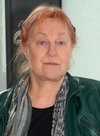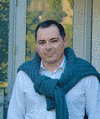SESSION 1

H.C. Scheer, Univ. Wuppertal – Aspects of Cavity Filling with Nanoimprint |
|
|
 T. Nielsen, NIL Technology ApS – NIL enabled Injection Moulding Production Technology for Multi-functional Nano-structured Plastic Components The European PLAST-4-FUTURE (P4F) project upgrades current injection moulding production technology by integration of state-of-the-art nanotechnology. The technology developed enables injection moulding manufacture of plastic components with micro- and nano-textured surfaces. The desired surface texture is defined on the injection moulding tool cavity surface by nanoimprint lithography and pattern transfer by etching. Unique surface functionalities can be achieved by combining this with state-of-the-art nanotechnology. In P4F we focus on optical and mechanical surface functionalities, inspired by nature: Structural colour effects as found in butterflies, anti-reflection from moth eyes, and super-hydrophobicity/self-cleaning as on leafs of the Lotus flower. In Nature, these effects are created from micro- and nanostructures, and in P4F we integrate this into the plastics. This will allow for colouring, other visible decoration effects, anti-reflective as well as self-cleaning surfaces of plastics purely from surface texture, fabricated directly in the injection moulding process. PLAST-4-FUTURE is funded by the European Commission (FP7-2012-NMP-ICT-FoF) under Grant Agreement number 314345. www.plast4future.eu |
 I. Bergmair, Profactor GmbH |
SESSION 2
 N. Kehagias, ICN Barcelona – Dimensional and defectivity metrology in NIL and NIL-related nanofabrication technologies Two dimensional metrology methods are presented for sub-20 nm size nanostructures fabricated by roll-to-roll nanoimprint lithography and bottom-up directed self-assembly: first, a recent advance in sub-wavelength diffraction suitable for inline metrology and secondly, a pioneering image analysis method for dimensional and defectivity analysis of linear self-assembled nanostructures. |
 J.-C. Cau, Innopsys – Magnetic field assisted micro contact printing: a new concept and its applications Micro contact printing (μ-CP), is a simple and cost-efficient technology well established worldwide. This technology opened new perspectives for various applications such as protein or cellular patterning, surface chemistry, physics, semiconductor … In this work, we present a new concept relying on magnetic field assisted micro contact printing. For that, we integrated on the upper side of a stamp magnetic iron powder (25% or 50% weight), the stamp became sensitive to an applied magnetic field. Therefore, tuning the magnetic field strength permits to adjust the force applied and thus, to automate the process as evidenced by our prototype INNOSTAMP40. We also present the optimization of this prototype regarding the alignment between the stamp and the substrate, which enable to deposit fluorescent dye with a 20 µm accuracy. INNOSTAMP 40 has been equipped with new modules such as a pipetting system that permits to upload and dispose liquid and an integrated heater located in the stamping module. These two complementary modules are used to create 3D structures by molding. The pipetting disposes the ink (i.e dendrimers solution) onto the substrate. The magnetic stamp is pressed on the inked substrate. Then, thanks to the heater, the patterns are anchored by solvent evaporation or polymer curing (according to the ink deposited into the substrate). We demonstrate the efficiency of magnetic micro contact printing for protein extract deposit. We print Peanut Protein Extract (PPE) on a nitrocellulose slide and show that the patterns composed of PPE are still functional as evidenced by an interaction with fluorescent labeled antiPPE antibody. |
SESSION 3
 C. Peroz, aBeam technologies – Nanoimprint Lithography for fabricating nanophotonic devices Nanoimprint Lithography (NIL) offers unique opportunities for cost-effective fabrication of photonic devices with nanometer scale structures. Here, we will discuss a novel Step-and-Repeat NIL proces for replicating on-chip spectrometers integrating a full optical circuitry (waveguide, splitter ..) and planar holograms, We will introduce a powerful approach to fabricate the first printable photonic device with high refractive index by direct UV imprinting of novel hybrid organic/inorganic materials. |
 M. Thesen, micro resist technology – Materials for Roll-to-Roll nanoimprinting |
 J. Law, IMRE, a*star – Surface Micro/Nano- Topographies Engineered Polymers for Applications in Lifestyle and Biology Many unique properties found in Nature are now known to be attributed to their specific surface topographies. The anti-reflection properties inspired by the surface topography of the motheye and the enhancement of stem cells differentiation into purpose-specific cell-lineages inspired from the native extracellular matrix (ECM) topographic environment are just a few of the examples. In this talk, I will present different types of micro/nano-topographies that are engineered onto engineering polymers via nanoimprint patterning to create specific functionalities onto these ordinary engineering polymers. Through this talk, the wonders of surface topography to benefit various applications (biomimetic engineering, auto-stereoscopy and cell-topography biological studies) will be demonstrated. |
 F. Guillemot, Saint Gobain – Surface micro/nano-patterning for functional glazing in Saint-Gobain Surface modification and coating deposition are the major path for the functionalization of glass substrates. During the last 30 years, innovation relied mainly on silver-based functional coatings deposited by magnetron sputtering, leading to very complex stacks in the last products. It appears now that the future innovation in glass or flexible substrate may come from surface micro- and nano-patterning to control the path of light or modify surface properties. We will give an overview the strategy of Saint-Gobain regarding these new possibilities. |
 R. Kirchner, PSI – Energy-based thermal reflow simulation for 3D pattern origination Electron beam grayscale lithography is a powerful method for multi-level patterning. Polymer reflow is an established process for the transformation of initial structures into smooth convex and concave surfaces. Both techniques are combined in a topography equilibration method for the origination of complex 3D patterns. This talk gives insight in the topography equilibration and focuses on its energy-based simulation. The proposed model is independent from explicit material knowledge and rather uses parameterization with fingerprint experiments. |
 T. Tanaka, Asahi Kasei – Large Area Seamless Roller Mold using Fast EB Lithography for R2R Process Asahi Kasei has developed several technologies for fabricating the roller mold which has seamless fine patterns on its surface. This mold enables us to manufacture a lot of flexible products with low cost when it is used in roll-to-roll NIL processes and printing processes. |
SESSION 4
 A. Schleunitz, micro resist technology – Hybrid Materials for micro-optical applications |
 F. Wippermann, Fraunhofer IOF – Fabrication of array masters for UV-replication of aspheric micro-lenses for imaging applications UV-Replication of polymer materials is a standard technique for micro-lens mass fabrication in order to meet the demand for low fabrication cost. In case of micro-optical imaging modules, lenses with aspherical profiles and comparatively large sag heights are required in order to meet the desired level of imaging quality. Therefore, the well-established process of reflow of photoresist for micro-lens mastering cannot be applied since strong limitations to the resulting lens profiles apply which are insufficient for imaging. Instead, ultra-precision diamond machining can be used to fabricate an array master consisting of several hundred individual lens molds. However, tight tolerance requirements to the pitch of the lenses apply which is critical in the full wafer diamond machining process due to the limitations of the equipment. As an alternative, a step&repeat process can be used for the array master fabrication relying on copying a single lens stamp by laterally repetitive replication into UV-curing polymers on a common substrate. |

